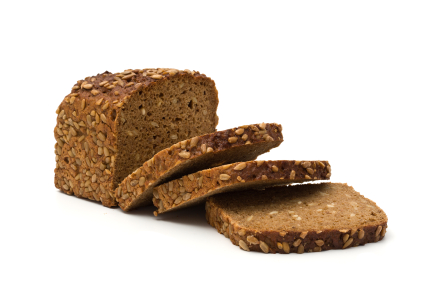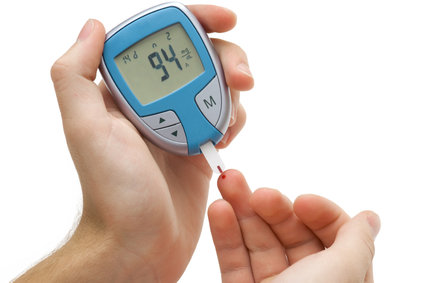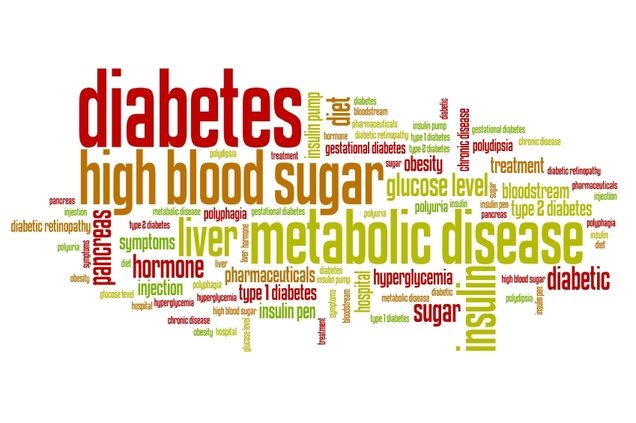The How To of a Metabolic Syndrome Diet
The How To of a Metabolic Syndrome Diet – What are we talking about when we say Metabolic Syndrome?
Metabolic syndrome, also known as insulin resistance, syndrome X, metabolic syndrome X, cardio-metabolic syndrome, insulin resistance syndrome, Reaven's syndrome, and CHAOS, if you live in Aus, is a constellation of symptoms.
Collectively, it indicates a problem with how your body, including your liver, pancreas and other organs deal with food. In short, it is a condition of excess energy intake and dysfunctional energy storage and metabolism.
You'll need a metabolic syndrome diet to set things right.
The How To of a Metabolic Syndrome Diet – Why care?
Why care about metabolic syndrome and, for that matter, a metabolic syndrome diet?
Metabolic syndrome raises big time your risk of cardiovascular disease and a host of conditions ranging from obesity to male and female infertility, psoriasis to diabetes …. If that’s not bad enough, your risk for dementia and Alzheimer’s also climb.
The scariest part of the metabolic syndrome diet discussion is that metabolic syndrome is widespread as tap water.
While often associated with being obese or overweight, neither is thought to cause metabolic syndrome. 80% of overweight people suffer from metabolic syndrome: but 40% of normal weight people are thought to as well. According to the US National Health Statistics report of 2009, incidence of Metabolic Syndrome increases with age and BMI.
An astounding 34% of the general adult US population over age 20 is thought to have metabolic syndrome.
Based on 2012 US census data, the above suggests upwards of 75 million adult Americans have metabolic syndrome. That doesn’t include the kids who are being diagnosed with metabolic syndrome in increasing numbers. Worldwide millions more are thought to suffer its effects, especially in South East Asia where Type II Diabetes is rife and it’s thought a genetic disposition may contribute to these closely related conditions.
...In short, metabolic syndrome is epidemic!
The How To of a Metabolic Syndrome Diet – Bottom line
So….you want the bottom line on metabolic syndrome?
|
What’s so bad about Metabolic Syndrome? - Metabolic syndrome is essentially the liver struggling to deal with too much energy coming its way. This can overwhelm its ability to cope – and contribute to fatty liver – a trigger for insulin resistance followed by excess circulating insulin and blood glucose, as well as free radical production. All three can directly damage the liver and metabolic health. |
As mentioned, it’s not just the overweight and aged among us who have to worry about a metabolic syndrome diet, we all do. …especially if we adhere to the typical Western diet and lifestyle, which is a double whammy when it comes to metabolic syndrome.
First, it is chock-a-block with
- highly refined fiber-free and anti-oxidant-depleted carbs,
- added or concentrated sweeteners, and
- poor quality fats including trans fats.
Second, a sedentary lifestyle, in which it’s the exception, among most people to walk or bike to work; and TV and computer time has replaced outdoor fun for many kids, is the norm.
Combine the above and you’ve got a likely case of metabolic syndrome coming on.
The sad thing is that metabolic syndrome is no longer just a health problem in developed countries. In the developing world, “progress” seems to involve assuming a Western diet and lifestyle. Unfortunately, the Western chronic disease profile soon comes to theatres near you, starring none other than metabolic syndrome as the villain. Is it any wonder that metabolic syndrome is on the rise worldwide?
The How To of a Metabolic Syndrome Diet – What is metabolic Syndrome?
While various authorities may define metabolic syndrome slightly differently, the National Cholesterol Education Program’s Adult Treatment Panel includes a constellation of 5 symptoms:
- Abdominal Obesity, – the apple versus the pear shape waist size – a waist circumference of greater than 40 inches (102 cm) for men and 35 inches (88 cm) for women
- High Fasting Blood Glucose Levels- greater than 6.1 mmol/L (110 mg/dl)
- Low HDL Cholesterol - lower than 40 mg/dL for men and 50 mg/dL for women
- High Triglycerides - greater than 1.7 mmol/L (150 mg/dl)
- High Blood Pressure – greater than 130/85 mmHg
If you’ve got 3 of the above 5, you’re considered to have metabolic syndrome.
Experts debate precisely which factors and levels of such qualify for metabolic syndrome. For example, the American Heart Association says fasting glucose levels should be no greater than 5.6 mmol/L (100 mg/dL). Others consider high uric acid levels (as happens with gout), excess proteins like albumen and creatinine in urine, and high blood levels of inflammatory C-reactive protein as additional markers of metabolic syndrome.
Whatever the details, the consensus is that metabolic syndrome is bad for your health.
The How To of a Metabolic Syndrome Diet – The bad news on having metabolic syndrome
- Metabolic syndrome puts you at increased risk for a host of health conditions including some of the biggest life style killers of our time. Many of the following conditions, like metabolic syndrome itself and in part because of it, are on the rise:
- Cardiovascular disease including increased incidence of arthrosclerosis, high triglycerides, low HDL, heart attack and stroke.
- High Blood Pressure
- Type II Diabetes and the constellation of symptoms that include cardiovascular disease, peripheral nerve damage, eye problems and liver and kidney disease.
- Non-alcoholic fatty liver disease that can lead to liver cirrhosis
- Cancer
- Dementia including Alzheimer’s
- Polycystic Ovarian Syndrome (PCOS) that can lead to excess facial hair, acne and infertility in women
- Erectile Dysfunction and low testosterone in men
- Psoriasis and psoriatic arthritis
- Frozen shoulder
So much for the bad news!
| What is insulin resistance? Insulin resistance is when the body loses its sensitivity to insulin, the hormone responsible for shuttling blood sugar into cells. The result is that blood sugar levels rise followed by insulin levels that creep upward but to not effect. Blood sugar levels, in turn, go up .… see the vicious circle? Too much of either hormone can damage the body. Insulin resistance is the hallmark of metabolic syndrome and Type II diabetes. |
The How To of Metabolic Syndrome Diet – The good news on having metabolic syndrome
The good news? Most of these factors that contribute to metabolic syndrome can be avoided or reversed with the right lifestyle including a metabolic syndrome diet and regular exercise - neither of which has to be fanatical or off the wall.
In most cases a metabolic syndrome diet and regular exercise plan can stop metabolic syndrome in its track and, in the best scenario, lead to renewed metabolic health.
The How To of a Metabolic Syndrome Diet – What is it?
As mentioned, metabolic syndrome is a condition of dysfunctional energy production and storage. The major player in all of this is the liver.
“The liver?”, I hear you asking.
|
What does the liver do? The liver has two major roles. First is as our main organ of detoxification to deal with the by-products of food, drug, chemical and alcohol digestion. Second, is to make sure the energy from these substances gets into the cells where it can be burned as metabolic fuel by the mitochondria. In addition, the liver stores for later use any excess energy not burned immediately. |
If you’re like I am, the liver is a part of the body I seldom consider, except when the word “alcohol” and too much of it comes up. When was the last time you thought about how your liver was doing, let alone what it actually does?
With metabolic syndrome, fatty deposits and inflammation accumulate in the liver. These reduce its efficiency and trigger a series of hormonal and metabolic changes that lead to organ damage and disease.
The How To of Metabolic Syndrome Diet - Substances that Contribute to Metabolic Syndrome
When we burn all we eat and drink, the liver generally keeps up. This is especially the case among the most active of us including elite athletes and the gym rats you see striding to China on the Stair Master.
According to some experts, the problems start when more energy is consumed than we can use. The body must deal with the excess.
In the case of carbohydrates, the liver transforms glucose (aka starch) into something called glycogen, which we can burn later when needed. In the case of dietary fat as well as some other substances that the body deals with like fats, the liver handles things differently. The energy is metabolized directly by the cell mitochondria with any excess either
- deposited in the form of fat around organs (visceral fat), or
- shunted into the blood as triglycerides.
A liver strangled with fat deposits has a diminished ability to metabolize carbohydrates and perform its other functions.
| What's wrong with too much insulin?– High levels of circulating insulin as occurs with insulin resistance and metabolic syndrome are bad news on a number of fronts. They contribute to increased risk of polycystic ovarian syndrome (PCOS), liver inflammation; cancer; arterial damage; high blood pressure; and Alzheimer’s. |
Liver metabolism, by its nature produces free radicals aka reactive oxygen species (ROS) which contribute to inflammation. By consuming enough anti-oxidants, we can mop up these free radicals and avoid damage on a cellular and DNA level.
The problem is the typical Western diet, deficient in unprocessed grains, vegetables, nuts and seeds, is antioxidant starved.
Together, fatty liver and inflammation contribute to development and progression of insulin resistance and its first cousin metabolic syndrome. When the body no longer responds to insulin, carbs, especially refined ones, can send your blood sugar skyrocketing following by sky high insulin levels that have no effect. The next stop on the train after metabolic syndrome is Type II Diabetes and its cascade of complications including cardiovascular disease, high blood pressure, cancer and dementia.
See the lethal progression!
|
What’s wrong with high blood sugar levels - excess blood glucose, whether because of insulin resistance, as in the case of Type II diabetes, or an absence of insulin, as with Type I diabetes, can damage the body and its system myriad ways including the following: decreasing the number of white blood cells and immune function generally; damaging blood vessels along with peripheral nerves; and promoting inflammation. |
The How To of Metabolic Syndrome Diet - Substances that Contribute to Metabolic Syndrome
Robert Lustig, the paediatric endocrinologist and author of Fat Chance and the presenter of the talk the Sugar – The Bitter Truth explains how the following substances can become liver-toxic-metabolic-syndrome-promoting-substances, if the dose is big enough. Unfortunately, he describes how the current Western diet is chock-a-block with these foods.
He singles out fructose and sugar as arch enemies in the Metabolic Syndrome epidemic along with alcohol, branch chained amino acids and trans fats. Their sheer numbers in our diet overwhelm our liver which simultaneously has to wrestle with an onslaught of refined carbs. Here is his list of major culprits in the metabolic syndrome epidemic.
|
Why Fructose Rich Food Won’t Make you Feel Full: Fructose messes with your normal appetite control system. Fructose doesn’t reduce ghrelin levels, an appetite triggering hormone, like other foods. Eat fructose laden treats and you won’t feel full. |
- Fructose (the sweet in sugar) is now ubiquitous in the processed foods made in the US including sodas, salad dressings, breakfast cereals and most prepared sauces and soups. Sucrose aka table sugar is not much better – it’s 50% fructose and 50% sucrose, so provides a double whammy – raising blood glucose levels plus contributing to fatty liver and insulin resistance.
- Trans fats contribute to fatty liver. They are in most commercial baked goods and fast food and restaurant meals but not in NYC where trans fats are banned in restaurants.
- Branch chained amino acids, such as contained in corn and animals fed the same, can be a problem for liver health. Dr. Lustig who refers to studies that show that those suffering metabolic syndrome routinely have higher blood levels of these substances than healthy subjects. They are rife in fast food.
- Alcohol – This is no surprise. Too much alcohol can overwhelm the liver and promote fat deposits, which lead to insulin resistance and metabolic syndrome. One exception to this is red wine in moderation, which has been found beneficial, possibly because of the antioxidants, including resveratrol that may protect the liver.
| Sugar Everywhere Beware the many guises sugar can wear on a food label. Some common aliases include fructose, glucose, sucrose, glucose solids, diastatic malt,ethyl maltol, dextran, cane juice crystals, crystalline fructose, buttered syrup, blackstrap molasses, molasses, caramel, maltose, galactose, high fructose corn syrup (HFC), invert sugar, demerara, sugar, Barbados sugar, castor sugar, invert sugar, honey, fruit juice concentrate, treacle, syrup, sorghum syrup, evaporated cane juice, refiner's syrup, raw sugar, organic raw sugar, xylose, saccharose, confectioner's sugar,golden syrup, rice syrup, fruit juice, muscavado sugar, maltodextrin, maple syrup, date sugar, brown sugar, yellow sugar, agave nectar, or lactose. Because food manufacturers must list all ingredients by weight, they sometimes choose to list various types of sugar to disguise the fact that the product is laced with the sweet stuff. Thanks to Robert Lustig's Fat Chance for the above list. |
So why is fructose such a bogeyman when it comes to metabolic syndrome? Bottom line is that, while fructose does not raise blood sugar like glucose, it’s a problem if consumed in excess, which it is in the US. Cells metabolize fructose like they do dietary fats. Any excess not burned is converted into fat deposits in the liver and triglycerides in blood.
Fructose occurring naturally in fruit is not a problem because it is generally a minor component and is combined with natural fibre that adds bulk, supresses appetite and slows absorption of food - all good things when it comes to liver health.
| Alcoholic Fatty Liver Disease aka non-alcoholic steatohepatitis is a serious and widespread condition related to metabolic syndrome and characterized by fatty liver and inflammation. It can lead to cirrhosis and liver failure. |
The How To of a Metabolic Syndrome Diet – So what to eat? The metabolic diet made simple
Okay, enough about metabolic syndrome and how too many people have it and all that can go wrong because of it. What do you do to avoid and reverse it once you suspect you’re at risk?
In short a metabolic syndrome diet is a liver friendly diet.
Essentially, avoid processed food and beverages with added sugars including fructose or concentrated natural
sugars, like fruit juice and smoothies. The problem with these is that the
fiber and/or anti-oxidant micro nutrients routinely have been removed or
destroyed and/or sugar or fructose added. Further, processed food is bereft of healthy
Omega 3 fatty acids. Press here for more on Omega 3 Benefits and Omega 3 Foods.
Instead, eat a whole foods diet containing unprocessed grains, legumes, fruit and vegetables that retain their natural fiber and anti-oxidants; along with sufficient healthy fats including enough Omega 3 fatty acids from nuts, seeds and fish or their cold pressed oils.
|
What are Whole Grains? When it comes to whole grains you’ll have to go behind the packaging. Current FDA labelling laws permit a food with less than 1% whole grains to be labelled whole grain. You can guestimate the actual amount by how far down the ingredients list the grain is. Overall fiber percentages may also give clues. Better yet, avoid refined foods like packaged breakfast cereals in favour of less processed grains like old fashioned oats, barley, quinoa and brown rice. |
If you follow the above guidelines, you’ll cut most processed foods in which fiber and micro-nutrient removal and destruction and the addition of caloric sweeteners like fructose and sucrose is the norm.
Remember, when it comes to metabolic syndrome diet, 100% fruit juice is as much a problem as sugary soda, because the fiber has been removed or dismembered, leaving a liver-immobilizing hit of fructose. Always eat the whole fruit instead of drinking the juiced version. First, more anti-oxidant micronutrients are retained than if the fruit or veg is processed. Second, the fiber tempers the glycemic effect of the sugar and liver punch from the fructose.
The How To of Metabolic Syndrome Diet – Ten Tips for a Metabolic Syndrome Diet
Still confused about metabolic syndrome?
...I’ve made it easy.
Follow the below ten tips – Five Dos and Five Don’ts for a metabolic syndrome diet and you’ll be a long way towards avoiding or reversing metabolic syndrome.
|
TEN TIPS TO AVOID METABOLIC SYNDROME Five Dos and Five Don’ts for a Metabolic Syndrome Diet
FIVE Dos of a liver friendly Metabolic Syndrome Diet
Five No Nos of a liver friendly Metabolic Syndrome Diet
|
Good luck and all the best in achieving your metabolic syndrome diet.
For more on a Metabolic Syndrome Diet, press below...
Press here for more healthy diet tips that can be part of a metabolic syndrome diet.
Press here for info about diabetes and diet.
Press here for more about comparing the most popular diets for Type 2 Diabetes.
Press here for more about blood sugar testing.
Press here for for more on low GL foods to balance blood sugar.
Press here for more about low glycemic diets.
Press here to read more about an anti-inflammatory diet and the top anti-inflammatory supplement picks.
Press here to read more about top inflammatory foods to avoid.
Press here to read about anti-oxidants and ORAC values and their importance to your health.
Press her to read about cancer and nutrition.
Press here for more about heart healthy diet fundamentals.
Press here for more about heart attack supplements.
Press here for more about high blood pressure supplements.
Press her to read about the benefits of omega 3’s and healthy fats.
Press here to read timely news and research about health and nutrition in the healthy diet
blog.
Press here to return to Healthy-Diet-Healthy-You home.
















